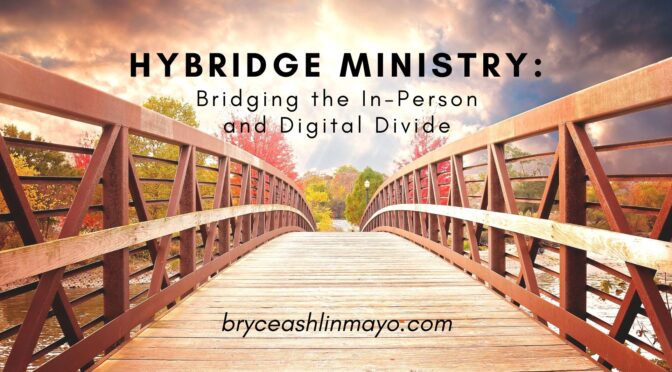***This post was written entirely by AI (I asked it to write a blog post on using AI as a pastor). It is posted intentionally without edit or comment***
As a pastor, you may be wondering how you can incorporate artificial intelligence (AI) into your work to better serve your congregants and improve your ministry. In this blog post, we will explore some ways that AI can be used as a pastor, as well as some potential benefits and challenges to consider.
One way that AI can be used as a pastor is through the use of chatbots. Chatbots are computer programs that are designed to simulate conversation with human users, often through messaging applications, websites, or mobile apps. As a pastor, you could use a chatbot to provide information and resources to your congregants, answer frequently asked questions, or even provide spiritual guidance and support. For example, you could set up a chatbot on your church’s website that allows people to ask questions or share their struggles, and the chatbot could provide personalized responses based on the information it has been trained on. This could be especially helpful for people who may not feel comfortable reaching out to a pastor in person or may not have access to traditional pastoral care.
Another way that AI can be used as a pastor is through the use of natural language processing (NLP) algorithms. NLP algorithms are designed to understand and analyze human language, and they can be used to analyze texts such as sermons, Bible verses, or other spiritual writings. As a pastor, you could use NLP algorithms to help you understand the themes and patterns in your own writing and teaching, or to find relevant passages from the Bible or other spiritual texts. You could also use NLP algorithms to analyze the language and sentiments of your congregants, which could help you tailor your messages and support to their needs.
AI can also be used as a pastor through the use of virtual assistants. Virtual assistants are computer programs that are designed to perform tasks and answer questions for users. As a pastor, you could use a virtual assistant to help you manage your schedule, organize your tasks, or keep track of important information. For example, you could set up a virtual assistant to send reminders about meetings or deadlines, or to help you find relevant resources or information. This could help you save time and energy, allowing you to focus on the more important aspects of your ministry.
There are many potential benefits to using AI as a pastor. One of the main benefits is that it can help you reach more people and provide support to a larger number of congregants. For example, a chatbot or virtual assistant could be available 24/7, allowing people to access support and resources at any time of day. AI can also help you personalize your support and care to better meet the needs of your congregants. For example, a chatbot or NLP algorithm could analyze the language and sentiments of your congregants to provide more targeted and relevant responses. Finally, AI can help you save time and energy, allowing you to focus on the more important aspects of your ministry.
However, there are also some challenges to consider when using AI as a pastor. One potential challenge is that AI may not be able to fully replicate the human element of pastoral care. While AI can provide information and support, it may not be able to provide the same level of emotional support or deep understanding that a human pastor can. It is important to recognize the limitations of AI and to ensure that it is used in a way that complements, rather than replaces, human pastoral care.
Another potential challenge is that AI may raise ethical concerns or raise questions about the role of technology in ministry. It is important to consider these issues and to have open and honest conversations with your congregants about the use of AI in your ministry.
In conclusion, AI has the potential to revolutionize pastoral care and ministry in many ways.
***This post was written entirely by AI (ChatGPT) – openai.com***






